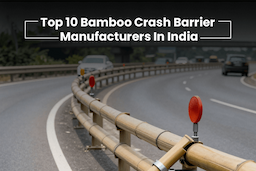As a Chief Procurement Officer, staying ahead with technology is crucial. P2P automation is a game-changer, breaking down old barriers in procurement. Gartner’s report shows a big move towards this, with the procure-to-pay market growing fast, expected to reach $13.4 billion by 2025. Automation can make your processes smoother, quicker, and more efficient. It’s all about making smart moves now to lead in the future.
This blog will explain how procure-to-pay software revitalizes your businesses, especially if you follow a traditional approach involving repetitive tasks.
The Evolution of P2P
The evolution of the Procure-to-Pay process has remained a contemplating point for CFOs and CPOs to increase efficiency and savings. The traditional manual procure-to-pay cycle, coupled with inefficiencies and poor spend visibility, contrasts starkly with the clarity and compliance of automation.
Moglix shows how a tire company could save money by changing how it does P2P. The company initially needed help with manual tasks and a need for unified suppliers. However, by automating P2P, they achieved a 3% cost decrease, a 95% OTIF rate, and a shorter PR-to-PO period of two days. This shows how efficient technology is, which is important for CFOs and CPOs who want to cut costs.
Navigating Challenges for Business Efficiency
A prominent EPC company’s MRO procurement process could have been more efficient due to a fragmented supplier base, inefficient multi-step processes, lack of standardized catalogs, and delayed order processing times. These challenges caused delivery delays, quality issues, and higher procurement prices. Moglix’s procurement workflow digitization helped solve these issues. Moglix implemented a streamlined procure-to-pay solution to improve procurement efficiency and transparency and reduce MRO procurement costs by 20%, proving that digital transformation can overcome operational challenges.
Final Words
When organizations upgrade their P2P method, they can cut costs, save time, get better visibility, and make mistakes less likely. Chief financial officers can learn more about how much money is being spent, which helps them control costs and negotiate better. Automation cuts down on manual chores by a large amount; A uniform system makes it easier to see what’s happening and make decisions. Automation in accounts payable lowers the chance of mistakes. In the end, P2P automation makes making requests easier, recording invoices, matching them, getting approval, and connecting them to ERP systems. This helps keep costs down, speeds up processing, and ensures correct financial reports.The procurement-to-pay process allows businesses to make wise decisions and enhance their financial operations. So, it is prudent for companies to proactively take consultations from experts like Moglix to learn more and resolve their supply chain issues.
Reference:




